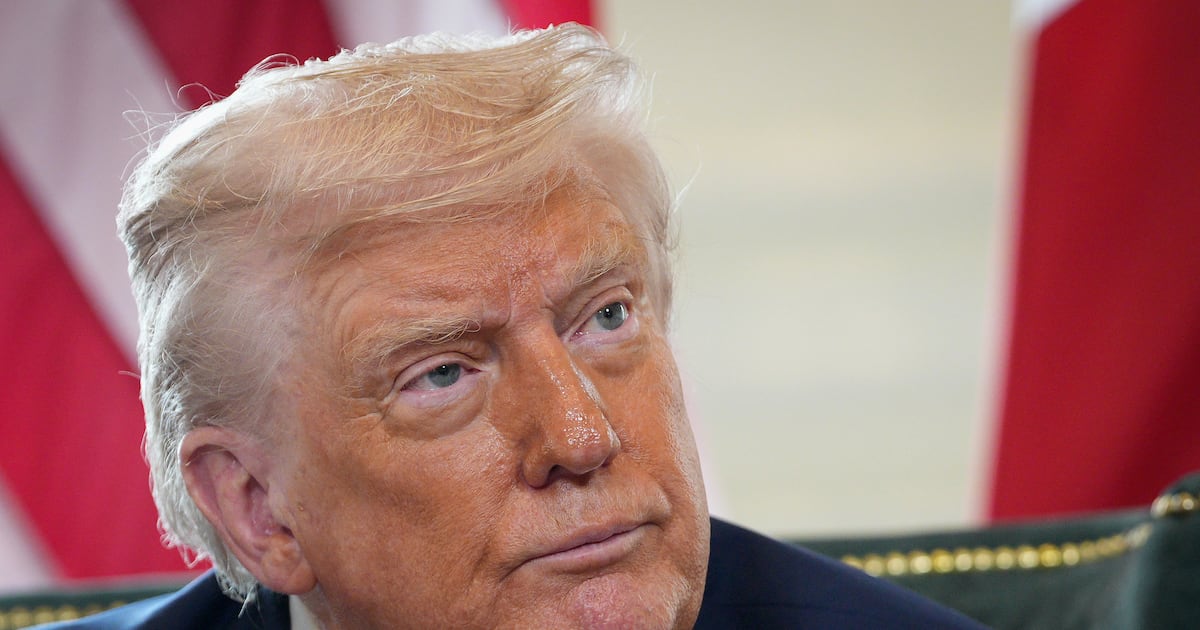Up to 70,000 fewer jobs will be created in the Irish economy over the next five years as a result of US tariffs, the Department of Finance has warned business groups.
At a meeting of the Government’s trade forum this morning, department officials gave their preliminary analysis of what impact the new 15 per cent tariff on EU exports into the US would have on the Irish economy.
They warned it would reduce economic activity here by roughly 1.5 per cent over a five-year timeline against a baseline of no tariffs while reducing employment growth by 2 per cent, which equates to 56,000-70,000 fewer jobs being created.
Officials cautioned that much of the detail in the deal brokered this week between Brussels and Washington, including possible carve outs for certain sectors, had yet to be ironed out and therefore their forecasts might change.
Speaking after the meeting Ibec’s Danny McCoy said he hoped “we might be entering into a period of stability” following the agreement.
“At least we have something we didn’t have before which is cetaintly helpful for business,” Mr McCoy said.
He highlighted the tariff differential between Northern Ireland and the Republic (10 per cent versus 15 per cent) as a potential concern while noting that both sides needed to work together “not to negate the North’s advantage” but to ensure it operates correctly.
Chambers Ireland chief executive Ian Talbot said the Government needed to focus on geography as well as sectors.
“Our successful clustering model could result in certain parts of the country being disproportionately exposed to one or two sectors,” he said.
“And there remains the question about whether the US may move the goalposts again in the coming months or years,” Mr Talbot said.
He said the forum also discussed the importance of opening up new markets with opportunities in Canada, Mercosur and India discussed.
US president Donald Trump has unveiled a slew of new tariffs that boosts the average US rate on goods from across the world, forging ahead with his turbulent effort to reshape international commerce.
The order set tariff rates, ranging from 10 to 41 per cent, for 67 countries, Taiwan and the European Union.
The baseline rates for many trading partners remain unchanged at 10 per cent from the duties Mr Trump imposed in April, easing the worst fears of investors after the president had previously said they could double. The European Union has agreed a 15 per cent tariff on exports to the US.
Canadian prime minister Mark Carney said he was disappointed after Mr Trump signed an executive order to raise tariffs on Canadian goods to 35 per cent from 25 per cent on products outside the scope of the US-Mexico-Canada trade agreement.
The move, which Washington linked in part to what it said was Canada’s failure to stop fentanyl smuggling, is the latest salvo in Mr Trump’s months-long tariff war initiated soon after taking power.
[ What does 15% tariff regime mean for Europe and Ireland?Opens in new window ]
US duties and tariffs will heavily affect lumber, steel, aluminium, and automobiles, Mr Carney said in a post on X, vowing action to protect Canadian jobs, buy its goods, invest in industrial competitiveness and diversify export markets.
[ Why did the EU sign a tariff deal overwhelmingly favourable to the US?Opens in new window ]
To justify its step, the US has cited the cross-border flow of fentanyl, even though Canada accounts for just 1 per cent of US fentanyl imports and has been working intensively to further reduce the volumes, Mr Carney added.
South Korea’s trade ministry said on Friday that exports of copper products to the United States were expected to decline due to a 50 per cent tariff on copper announced by Mr Trump.
The ministry said in a statement that it would actively respond to minimise the impact by diversifying copper exports.
The US set a 19 per cent levy on imports from Thailand and Cambodia, lower than the 36 per cent they originally faced, after Mr Trump threatened to block trade deals with them unless they ended a deadly border clash.
Malaysia, which helped broker the ceasefire, was also set at 19 per cent. That’s on par with previously announced rates for Southeast Asian neighbours Indonesia and the Philippines. The US is the largest export markets for both Cambodia and Thailand.
Meanwhile, Mr Trump is setting a 20 per cent duty on Taiwan’s exports to the US, one of a number of so-called reciprocal tariffs he imposed Thursday, hours before a deadline for nations to reach trade frameworks with his administration.
The figure was set in an executive order that Mr Trump signed, with the levy set to take effect on Friday. The number is lower than the 32 per cent tariff Mr Trump had first announced for Taiwan in April, before he paused his slate of levies to allow time for negotiations.
Taiwan’s rate compares to a 15 per cent levy that neighbouring Japan and South Korea settled on with the US. – additional reporting by Agencies

